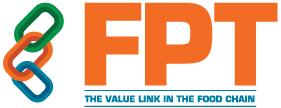Frozen Vegetables Production Line
In a Frozen Vegetable Production line, vegetables are frozen cryogenically. The outer layers of the vegetables are immediately cooled to -80 to -120° F by passing through a tunnel cooled by liquid nitrogen to as low as -120° F. Heat from the foods core seeps to the outside as it exits the cryogenic tube, resulting in a final stable frozen condition. Immersion is also used in several items.
Foods with a thick sauce or sticky surface can be frozen by air-blasting after being immersed in an ultra-cooled liquid for a few seconds. Frozen vegetable production lines are those that have had their temperature decreased and kept below the freezing point for storage and transportation until they are ready to consume. They can be bought ready-to-eat or frozen at home.
Supermarkets sell a large variety of frozen vegetables, Spinach, broccoli, cauliflower, peas, maize, and yam (in Asia) are examples of frozen vegetables that can be bought in supermarkets, either as single ingredients or in mixes. Frozen veggies are occasionally combined with other foods, such as pasta or cheese. A similar method is used to manufacture frozen fruits.
Frozen Vegetable Production Line has several advantages over fresh vegetables, such as being available when the fresh counterpart is out of season, having a long shelf life when stored in the freezer and having been processed one step or closer to consumption (usually washed and cut, sometimes also seasoned). In many circumstances, they are less expensive to buy than their fresh counterparts or are packaged while still ripe.
In the Frozen Vegetable Production Line, Frozen vegetables are picked, washed, blanched, and cut before being frozen and packaged at low temperatures. The freezing method in the Frozen vegetable production line aids in long-term preservation while preserving the flavour, colour, texture, and nutritional content of fresh foods. Sliced, uncooked, pureed, and cubed frozen fruits and vegetables are ubiquitous. These items have several advantages over their fresh equivalents, including faster preparation time, lower cost, and simple availability throughout the off-season.
The Global Frozen Vegetable Production Line industry is primarily driven by increased demand for ready-to-eat food items. In line with this, the year-round increase in demand for seasonal fruits and vegetables is another key growth-inducing element. Additionally, increased consumer health consciousness and understanding of the nutritional worth of frozen fruits and vegetables are propelling the industry forward. Rapidly improving cold storage networks are resulting in a consistent and reliable supply of frozen fruits and vegetables around the world, fueling frozen vegetable production line industry expansion.
Frozen Vegetable Production Lines are widely available in supermarkets and are becoming an increasingly important part of the global food sector. Fruits and vegetables are normally frozen within hours of being gathered, and when thawed, they have a taste and texture that is comparable to that of fresh produce.
In time-pressed households, frozen meals are becoming increasingly popular. The whole time from freezer to table can be less than five minutes if the meal can be prepared in the microwave. Freezing is a safe technique of preservation because most pathogens are inactivated at low temperatures, therefore it provides a fresh taste and convenience.
The best freezing methods for Frozen Vegetable Production Lines vary a lot depending on the food product. Also, not all foods freeze well. Peas and strawberries, for example, have been shown to freeze well in certain types. This could be due to their solid texture or the amount of sugar they contain. As a result, farmers will plant these unique types on behalf of a frozen food corporation.
The history of the frozen food industry may be traced back to the early twentieth century when some foods were preserved using the so-called cold-pack method. Food handlers would wash and sort fruits and vegetables before loading them into enormous containers that could store up to 400 pounds. For several days, the big containers were kept in a cold storage chamber until the material was solidly frozen.
Raw materials in frozen vegetables production line
Whatever is to be frozen, such as vegetables, chicken, green beans, and pizza, is used as raw material in the frozen vegetables production line. The food is usually specially cultivated or suited for freezing. The recipe for frozen delicacies like cakes and pies, as well as dinners like meatloaf and gravy, must be tested and tweaked to ensure that they freeze well.
Large corporations will place orders for the best ingredients based on the standards they've established throughout product testing. For example, the noodles in a frozen pasta meal may be ordered in bulk from a distributor who produces them to the frozen food manufacturer's exact specifications for width, viscosity, and wheat content.
Ingredients in a frozen vegetable production line may differ from what a home cook would purchase at the supermarket in this regard. Frozen foods, on the other hand, don't require a lot of added components like preservatives. Thickeners and stabilizers including starch, xanthan gum, and carrageenan are widely used as added ingredients.
These aid in the preservation of the food's intended texture after thawing. Recipes for frozen foods may benefit from the inclusion of a sauce or glaze, which prevents the item from drying while being passed through the freezing air blast. Fruits and vegetables designated for freezing may also be gathered at a different time than if they were to be sold fresh because they are frozen.
Process of Frozen Vegetable Production Line
The frozen vegetable production line item's actual method differs based on what is to be frozen. Peas are the most popular frozen vegetable in the United States, having nearly supplanted fresh peas in supermarkets. Many vegetables go through the same process as peas.
Typically, food processors hire farmers to raise their products to the requirements required for freezing. Farmers plant a pea variety that has been certified as a good freezer. Both the farmer and the producer must agree on the harvesting timetable.
The producer will assess the tenderness of the peas as well as the amount that the frozen vegetables production line can handle. Peas must be frozen within hours of harvesting, and if there is a backlog at the freezing plant, some peas may rot. Peas can be picked by hand or by machine. Then they're separated from their shells by a machine called a viner. The peas are transported to the frozen vegetables producing line if it is close to the fields. If truck transportation is required, the goods are chilled with ice water before being packed in ice for transit. The peas are dumped into beds at the factory and sprayed with water to remove dirt and dust.
Following that, the peas are placed in a vat of boiling water for a few minutes. This kills the enzymes that give peas their flavour, but it doesn't cook them. The peas are blanched, chilled in water, and then run through a gravity sorter. Following that, the peas are sorted to remove any old, starchy peas. They are submerged in water containing a specific amount of salt. Peas with a high starch content sink to the bottom of the brine tank, whereas tender peas float to the top. After being sprayed with clean water to eliminate the salt, the tender peas are sent to an inspection area.
Depending on the frozen vegetable production line, packaging may come before freezing, or the peas may be individually rapidly frozen and then boxed. Any of the standard ways of freezing could be used. The peas may pass through a blast tunnel where ultra-cooled air freezes them if they are frozen before packing.
Alternatively, they could be put onto a conveyor that transports them to metal plates cooled by chilled ammonia from below. The sealed boxes can be loaded into trays if they are packaged before freezing. Frozen Vegetable trays are stacked in a multi-plate freezer, bringing the pea bundles into touch with cooled plates on both sides. The frozen items are then loaded into shipping containers by personnel.
Our Principal
Kiron Food Processing Technologies in association with Bigtem offers a complete Frozen Vegetable production line solution for your business. Bigtem is a world leader in this industry, producing processing lines for more than half of the frozen vegetables produced worldwide.








